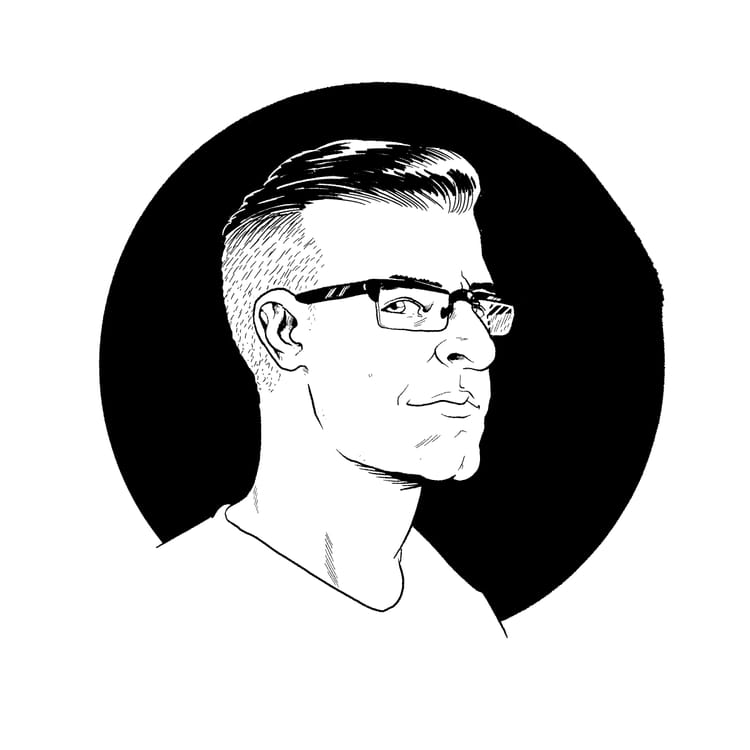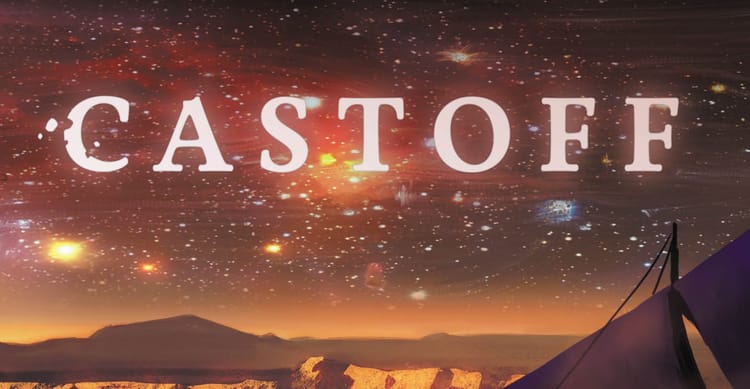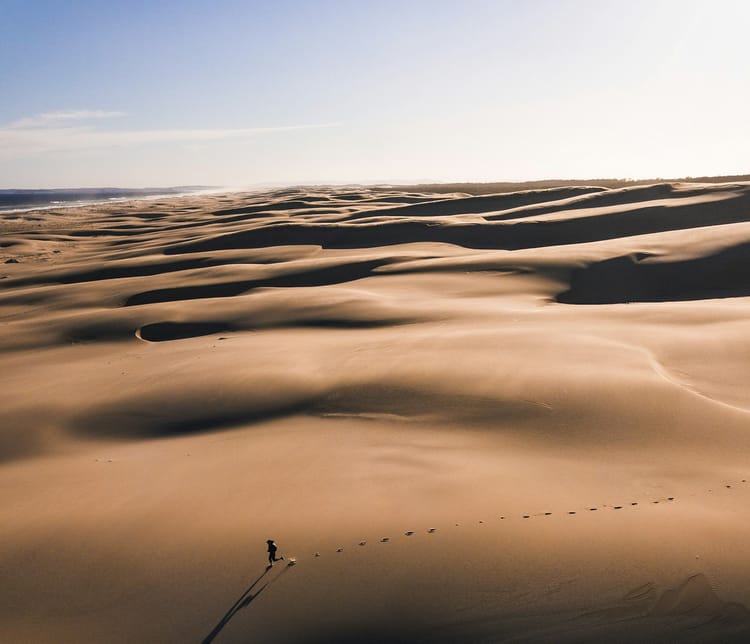Building Beyond: Space Strikes
Building Beyond is an ongoing series of conversations about how much fun worldbuilding can be. Building a world doesn’t have to be hard or scary. Let’s give it a try, together.
You live on a space station. It is advanced, but you live in close quarters, and everyone present has jobs that are absolutely necessary for the station to function so everyone can stay alive.
You are part of a budding movement toward astronaut unionization.
Writer Tessa Fisher is a happily-married PhD candidate and possibly the world’s only openly trans lesbian astrobiologist, dedicated to figuring out better ways of detecting life on exoplanets. When she’s not doing science, her hobbies include burlesque dancing, singing in her city’s LGBT women’s chorus, yoga, and writing LGBT+ positive science fiction and fantasy. Her work has appeared in Vulture Bones, Fireside, and the anthologies Rosalind’s Siblings and Glass and Gardens: Solarpunk Winters; she also has upcoming pieces in Analog and Baffling Magazine. She currently resides in Phoenix, AZ, with her wife, along side a fairly aloof bearded dragon.
Gailey: Let’s dive right in: What kind of symbols does the space labor movement use as iconography?
Fisher: With the caveat that I am emphatically not a graphic designer, or even really trained in design, I'd probably adapt the old classics — for example, a raised fist of solidarity in front of the outline of an airlock. Given how harrowing working in space can be (and thus, workplace safety being a major motivator for unionization), I could also imagine safety or caution symbols and icons being repurposed. This might even lead to a change from the red color palette traditionally associated with labor organizing, to a green one (green indicating all systems nominal). Alternatively, depending on where the station is located in the solar system/galaxy, worker astronauts might adopt old astrological symbols to their cause.
Gailey: How would you go about distributing pro-union materials in an environment that's closely monitored by your earth-bosses?
F: The easiest way would probably be using sign language. As used to excellent effect by James S. A. Corey in The Expanse series, people who spend a lot of time in vacuum would likely develop sign language as a back-up in case radio communications fail, or just for simplicity of use. As long as you're facing away from any cameras or otherwise have your hands concealed, you could communicate to large groups of people without risking any audio being recorded or otherwise being noticeable.
Gailey: What about meeting places?
F: A space station would likely have 'storm shelters', heavily shielded rooms for use during solar eruptions and subsequent high levels of solar radiation. As a result of the shielding, radio (and, depending on the design, electrical signals as well) would not be able to get in or out. Consequently, such storm shelters might be relatively hidden from the eyes of Earth.
Gailey: So you’ve got your iconography and you’re able to communicate. What about going on strike? How would that work in an environment where labor is essential to life?
F: This is the tricky part! Especially if your station is still largely dependent on Earth for food, resources, etc. A full-out strike could be risky, either because your bosses simply cease shipping needed supply to you, or, if you're self-sufficient, the stoppage of production and recycling of essential resources causes a catastrophic systems failure. What might be more effective is a slowdown, or, better yet, a work-to-rule — workers doing what's required of them, but only the barest minimum, at the slowest possible speed. That way, there's still food and air circulating the station, but, strangely, mineral extraction or refining might fall off precipitously. Research equipment would suddenly require more frequent, and extensive, calibration sessions. The hot water in the quarters of the on-station bosses might become strangely unavailable. Minor repairs might inexplicably start requiring weeks instead of hours or days.
The goal would be to hit the sweet spot where productivity isn't so low that critical life support systems might fail or upper management might feel justified in taking extreme action, but still low enough that it starts to put the squeeze on the managing corporation — ideally, in such a way that the easiest way to deal with the situation is for management to concede to the union's demands. After all, it takes a lot of money to build the infrastructure, and train the people, to work in space — as much as investors might clamor to generate as much profit as possible as a result, they're also less likely to want to do anything that might endanger that investment.
Shahrzad Samadzadeh's best friends, growing up, were books. She dreamed of connecting with people, making their lives better, and making her own life better along the way. In the search for "better" she had a long road road full of twists and turns: working as a research scientist, a journalist, a startup cofounder, a DJ... Today, she's an executive at a tech company, running a User Experience Design org.
Gailey: What kind of symbolism does the space labor movement use?
Samadzadeh: The space station is a pragmatic world, a world of getting shit done to survive. Often in survival-first cultures, the memes that thrive are of a symbolic or even totemic individual person, a representation of qualities that are both aspirational and relatable.
While many of the jobs on the space station are handled by teams, or handled through work rotations, some jobs can only be done by individual experts. One of those expert jobs is keeping the communication systems that report back to Earth in good functioning. My friend Dallas does this job. As part of our budding labor movement, and at great risk to themself, Dallas will sometimes jam, meddle with, or otherwise obfuscate the connection back to Earth just enough to give us time and space (no pun intended) to plan our movement.
Dallas has become our icon. Someone created a funny rendition of them: their outline hunched over a small, spiky piece of electronics with sparks coming off of it. We put that image on everything, openly and playfully. Our bosses suspect nothing.
Gailey: How do you go about communicating with each other about your plans?
S: Beyond the bold sabotage that only Dallas is brave enough to do, our core group of union inciters relies on a small number of blind spots and workarounds. We lay the groundwork for our union philosophies through stories and jokes: remember-whens and did-you-hear-abouts and one-time-I’s. When it’s time to share obviously union-specific information, we've found that the most effective and secure way to do so is during sexual activity.
In the early days of life in space, a high-profile (and highly expensive) legal case on the monitoring of space station sexual activity tore through the courts and the media. Strict policies and procedures were not only put into place but also fully automated so that companies could avoid future legal risk. Through carefully planned trial and error, we learned the automation systems so we could take full advantage of them. The others don’t know we are hiding what we do from our bosses; we need them to believe we are doing our organizing in the open.
Gailey: How will you go on strike without anyone dying?
S: Understanding the business of space station life has become my hobby for the last many months. Some of what we do is to keep us alive, but some of it is to keep money flowing into the pockets of our bosses. It’s hard to tease these apart, in a way that I suspect is by design. During our prescribed meditation and mental health hours, I spend my time frantically journaling what I’ve learned that day, sketching and re-sketching the systems of our ship and our day-to-day work. I think I’m getting close to understanding what we need to keep doing—and what we can go on strike against. Stay tuned.
My space union represents itself using images of early navigation methods, like the astrolabe and the sextant. These symbols highlight the specialized knowledge and skill the workers bring to the company that owns the space station — and serve as a reminder of just how useless all the expensive, modern tools at hand would be without those workers. Communication and planning takes place via song, with nesting layers of self-referential lyrics serving to make the intentions of the union unclear until the time is right. Although a full strike in space wouldn’t be possible, we could interrupt communications and interfere with profit-oriented activities just enough to send a message. In such close quarters, it shouldn’t be too difficult to ensure that the people in charge are willing to make compromises in order to keep things running smoothly.
All of these possibilities are just beginnings. Tessa’s union is the foundation of a story about a space station where everything runs smoothly until the moment the boss arrives. Shahrzad’s labor movement is the beginning of an immersive, interactive first-person narrative that invites the reader to join the struggle. My organization is the start of a story about the way labor unions and existing protection rackets might be able to work together toward a common goal.
What is your space station like? Who owns it, and what leverage might the workers have to change the way they’re treated? How do you go about building, and growing your labor movement in the vacuum of space?
Do whatever you want with these questions. You can write something down in the comments or on social media or in a notebook nobody will ever see. You can draw or paint or sit down with a friend and talk their ear off about your ideas. You can stare at the horizon and imagine, letting the infinite landscape of your mind unfold just a little farther than it did yesterday. No matter what you do, take pride in the knowledge that you’re creating something that has never existed before. You’re building a little corner of a whole new world.
That’s amazing.
If you haven’t already, I hope you’ll consider subscribing to this newsletter. The subscriber community is a wonderful and supportive one, and we’re spending 2021 finding new ways to stay connected and share experiences.
Also, I have a new book out! You can order The Echo Wife wherever books are sold.
In the meantime, care for yourself and the people around you. Believe that the world can be better than it is now. Never give up.
—Gailey






Member discussion